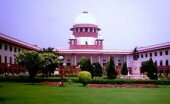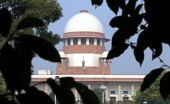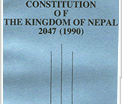Judicial Activism Unleashed, Again
Written by Shantanu // February 12, 2011 // Law & The Judiciary // 9 Comments
Section 3(5) of the Terrorism and Disruptive Activities Act provides,
Any person who is a member of a terrorist gang or a terrorist organisation, which is involved in terrorist acts, shall be punishable with imprisonment for a term which may extend to imprisonment for life or with fine which may extend to rupees ten lakh or with both. [emphasis supplied]
The provision cannot be simpler, or clearer in what it renders an offence. The membership of a terrorist gang or organisation (as defined in the act) is all that is needed for the purposes of section 3(5). In a disturbing exercise of judicial overreach, the Indian Supreme Court in Arup Bhuyan v. State of Assam, has seen it fit to toy with this clear expression of the Parliamentary intent.
I do not wish to enter into a debate on the moral or ethical validity of the TADA; I take issue solely with what the Court has done, and how it has gone about doing it. First, what has been done is that the words ‘who personally resorts to violence or incites people to violence or creates public disorder by violence or incitement to violence’ have been added to the provision. Three possible explanations for this apparent exercise of legislative power emerge from the brief judgement-
(a) Confessions are unreliable since “under torture he will confess to almost any crime. Even Joan of Arc confessed to be a witch under torture”. However, under section 15 of the TADA, confessions made to the police are admissible. Hence, the conviction under the TADA for being a member of the ULFA, based solely on the confession, is based on shaky foundations.
(b) A decision of the US Supreme Court in Elfbrandt v. Russell (1966), which the same Bench had approved a month earlier in State of Kerala v. Raneef as being authority for the proposition that a person cannot be held guilty by association.
(c) The provision violates Articles 19 and 21 of the Indian Constitution.
Let us consider each of these in turn.
As to the inadmissibility of confessions, the Court is absolutely right as to the possible infirmities confessions can suffer from. However, once that provision has been held to be constitutionally valid, as it has, suspicions about it cannot besmirch another provision of the same Act. What may have been open was to argue that the evidence was insufficient to conclude that the accused was the member of the terrorist organisation. However, that would require a detailed examination of the evidence, which the Court chooses not to engage in. It instead prefers to focus on section 3(5) of the Act, proceeding on the assumption that the accused is a member of the organisation.
As to the decision of the US Supreme Court, while much may be said for not proving guilt by association, if the Parliament in its (deemed) wisdom has chosen to depart from that principle, there is precious little the judiciary can do about it. The reference to the earlier decision in Raneef is also misleading, since that was an appeal from a rejected bail petition, where the learned judge had observed, “at this stage we are not expressing any opinion as to whether the allegations in the versions of the prosecution or defence are correct or not, as evidence has yet to be led. However, we would like to make certain observations”. That certainly is insufficient to constitute an approval of the US doctrine in the Indian context, especially when it flies in the face of the express statutory language.
Finally, the only potent arrow in the quiver is the challenge to the constitutionality of the provision. The Court chooses not to hold the provision unconstitutional, but to use to potential unconstitutionality to ‘read down’ the provision. For starters, adding a clause to a provision which is at odds with the clear Parliamentary intent cannot be called ‘reading down’ in any sense of the term. However, even if it can (since precedent may be cited of similar instances of reading down), there must be an examination of what the infirmity with the provision is. Unfortunately, the Court contents itself with saying, “In our opinion, Section 3(5) cannot be read literally otherwise it will violate Articles 19 and 21 of the Constitution. It has to be read in the light of our observations made above. Hence, mere membership of a banned organisation will not make a person a criminal unless he resorts to violence or incites people to violence or creates public disorder by violence or incitement to violence”. This statement does little more than identify what the applicable provisions of the Constitution are. We are left in the dark as to whether the provision fails on grounds of ‘reasonableness’ under Article 19, which clause of Article 19 it breaches, why it is not saved by the ‘established by law’ clause of Article 21, and similar questions.
Technically, it may be incorrect to refer to this decision as an exercise of judicial activism, since it can be justified as an exercise of judicial review. However, what is alarming is the nonchalance with which clear expressions of legislative intent are ignored, which cannot augur well for a balanced separation of powers between the institutions of governance.





9 Comments on "Judicial Activism Unleashed, Again"
As a matter of curiosity, do you think the judgment could have been justified had they struck it down for violating either Art. 19 or 21?
Hi Gautam,
I would probably think not. Especially, since it is a provision duly enacted by law (as opposed to an exercise of executive powers); and also given its object and purpose, criminalising the membership of a terrorist organization does not seem unreasonable.
Your observations are spot on. The Court cannot read in additional substantive elements into a statutory offense. I would describe this as a case of judicial over-reach rather than activism, since the latter term connotes a proactive substitution of judgment in matters of policy (as opposed to re-interpreting statutes in a strained manner to arrive at the desirable conclusion in a dispute). Even though I personally consider Section 15 of the now repealed TADA to be a legislative stupidity of the highest order, the proper course for the court should have been to discuss the evidence on record.
surprisingly, neither the learned counsels nor the Hon’ble Judges deciding the matter and ofcourse the learned people above have noticed that the case ought to have been decided on a simple ground which is as under:
the Hon’ble Apex Court allowed the appeal of the convict and set aside the impugned judgment of the Designated Court, Assam at Guwahati dated 28.03.2007 passed in TADA Sessions Case No. 13 of 1991 whereby the TADA Court convicted the Appellant under Section 3(5)of the TADA which makes mere membership of a banned organisation criminal. Admittedly, the case against the Appellant was that in the year 1991 which would imply that the offence was committed sometime in 1991 or earlier and in no case after 1991. Curiously, Section 3(5) of the TADA has been inserted in the statute book in 1993 by Section 4 of Act 43 of 1993. In the instant case the charge which was framed by the Court against the Appellant was under Section 3(5) of the said Act. But such a charge could not have been framed against him by the Court in as much as on the alleged date of occurrence, i.e. in the year 1991, Section 3(5) of the Act was not brought on the statute book and thus did not exist as an offence. The framing of the charge was thus inherently defective and consequently, the conviction, bad in law.
see Ganesh Gogoi v State of Assam, reported in (2009) 7 SCC 404
You can go to their websites and look for a listing for the
doctors you are considering. Just like other facilities, medical facilities at
Salt Lake City are quite advance and it has been serving different needs of the patients for the past many years.
Unlike other muscles in your body, your facial exercise are connected as skin and bone, forming a cushion for the
skin to relax.
Feel free to surf to my homepage; facial plastic surgeon Ri
Other symptoms can include but are not limited to irritability and mood swings, hot flashes and night sweats, memory lapses, aching joints,
depression, weight gain, and pelvic pain. Sun Labs also provides a lot of individual
self tanning and fake tan products that you can sell to your clients as they walk out the door.
My personal preference having used both mediums is the lotion, or the sunless tanner spray, sprayed
on and then rubbed in.
Here is my site; spray tanning vero beach
Dark sunsation self tanning lotion has botanical extracts, which improve
the quality of your skin while offering you a dark natural looking tan. You also have
to be at ease in your dress, able to glide down the aisle in it & look comfortable all day long.
They impart a brown color to the concoction, which immediately
turns your skin brown.
my homepage :: st tropez fake tan remover
They can get proper rhinoplasties are really affordable rates and hence the demand is always high.
Is he an active member of a Plastic Surgery Association or Society.
This will give an assurance that the treatment which has offered is effective and suitable for you.
My blog – download job application form
Trackbacks for this post